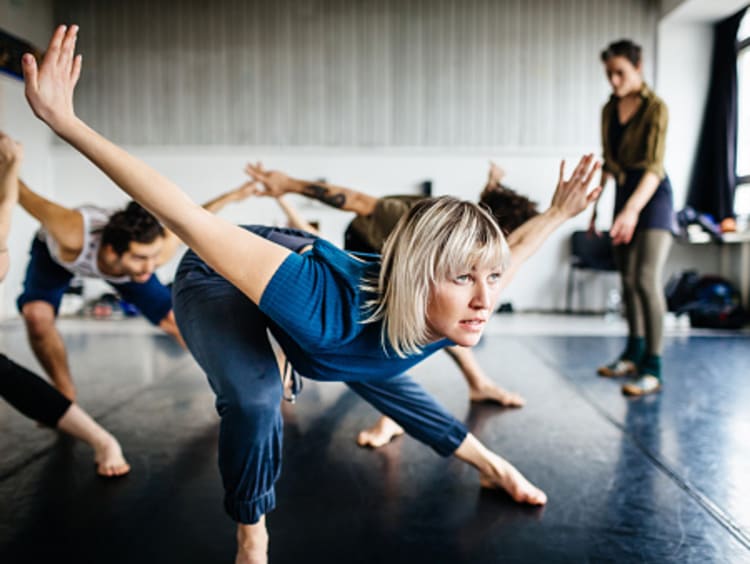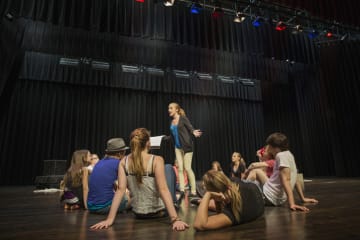How To Prepare for an Audition as a Dancer

Auditions are your chance to show your talent and skills to a panel of judges, choreographers and other important figures in your dance career. Whether you are auditioning for a college dance program, a professional dance company or any job in the entertainment industry, mentally and physically preparing for an audition can be overwhelming. Every audition is going to be different, but it is always better to be overprepared than underprepared.
One of the most important keys to success in auditions is maintaining a positive and uplifting mindset, rooted in courage and confidence, to help market yourself as best you can to the lucky panel that gets to watch you dance. Here are some important tips and tricks you can use to help prepare for an audition.
Researching the Audition
The first important thing to know is what you are auditioning for. It is essential that you research the potential company and role you are auditioning for beforehand to help you be as successful in the audition as possible. For example, are you auditioning to be a lead for a ballet company or to be a backup dancer? Each of those roles involves different types of auditions, which require different types of preparation — so it is very important that you learn as much as you can about the company you are auditioning for before you walk in the door.
Another important thing to find out in advance is whether there is a fee for the audition. If there is, make sure to bring a proper form of payment with you. There may also be an internal application on the company’s website that must be filled out ahead of time.
Make sure to check the application well before the audition, because there may be a deadline to apply and/or they may have different submission requirements, such as a dance reel or headshot. Be sure to give yourself enough time to gather all the necessary resources.
Something else you should do before the day of the audition is to look up the choreographer who will be running the audition and learn about their style. Knowing and understanding a choreographer’s movement quality and style preferences will help you be more successful in an audition because you will know what the choreographer is looking for in a standout dancer.1
It is also important that you know the requirements to audition for the role you are preparing for. For example, suppose that you are auditioning to be a backup dancer and the choreographer wants the dancers they cast to be above the age of 18 and have experience dancing in heels. If you do not meet those requirements, you may want to consider auditioning for other roles that better fit your talents and profile description.
What To Bring To a Dance Audition
Along with learning about the audition and how to prepare mentally for the job, it is also important that you bring all the proper materials.
Headshots
First off, you should always bring multiple printed headshots to an audition. Usually, one will be enough; however, if you encounter a panel of 10 judges, one headshot may not be sufficient for their needs. Your headshot should be professionally photographed, and some auditions will want not only the headshot but also a full body photo, so be sure to have both printed and at your disposal when you arrive.
Resume
In addition to multiple head and body shots, you should always bring a few copies of your resume as well. Your resume should be a collection of your highlights as both a dancer and choreographer, and should include:
- Your name and phone number
- Your strengths
- Your recent accomplishments
- Where you’ve trained
- Who you’ve studied and trained with
- The names of any mentors you may have had
- Performance experience Your resume is how you market yourself to the judges before they even see you dance, so make sure it is neat, easy to follow and organized — but let it show your personality, too.
Dance Attire
Finally, always bring a variety of dance attire and shoes when you are go to an audition. If you are auditioning for a modern or contemporary company, they may ask you to do a ballet barre, perform some moves across the floor or learn choreography, or they may also give you an opportunity to show your personal style through improv. To be prepared for such a scenario, you should bring a combination of leotard, tights, ballet shoes and clothes that you can move in (and that you can easily change into), as well as jazz shoes or half soles.
On the other hand, if you are auditioning to be a backup dancer, bring clothes for jazz and hip hop, tennis shoes, heels, and whatever else you may need to show your strengths in your freestyle and improv. If appropriate, wear something to the audition that is going to make you stand out in the crowd. Be edgy — but keep it clean and neat.
Arrive Early and Warm Up
Another important tip for success is to arrive early. Give yourself time to check in, warm up and mentally prepare yourself for the audition. A good, thorough warmup is essential to any dancer wanting to perform their best. The audition itself will most likely not have a warmup, so take time to center yourself, warm up and stretch beforehand.
Not only will arriving early allow you to warm up before the audition, but it will also give you time to learn the studio space, orient yourself and where you may want to stand, as well as to take a few breaths if you start to feel nervous.
Other Tips and Tricks
Finally, here are a few extra pointers and tips to help you feel your best on audition day2:
- Versatility: First, practice regularly in a variety of dance styles, taking extra time on technique, and condition your body to withstand the rigors of the audition world. Versatility is a highly sought-after quality in a dancer.
- Cross Training: Cross training with endurance and strength training can help you be the best version of yourself on audition day. Lift weights to help increase strength for partner work, and increase cardio for stamina and endurance. Do yoga or Pilates to strengthen your core and focus your mind. Be patient and find what works for you.
- Sleep/Nutrition: Next, get plenty of sleep the week before your audition, and eat a plentiful and well-balanced meal leading up to the audition. It is also a good idea to eat a light meal an hour or so prior to your audition so you can function at your highest ability. Some auditions can last several hours, so bring (healthy) snacks.
- Be prepared for anything: Hopefully you did your research prior to the audition. However, come prepared for surprises. You may be asked to choreograph a short solo, participate in a group class, improvise, etc.
- Be seen: Make sure to stand in a place where you can be seen. There may be a few hundred people all auditioning for the same role, so it is important to put yourself in a place where you can be easily seen so you can stand out.
- Be confident: Finally, it is important to exude confidence and positivity in an audition. Regardless of whether you are nervous, remain lighthearted and natural in your attitude, and hold your head high. Show them your drive, confidence and hard work.
Auditions are the way a dancer lives in the professional industry, and through careful preparation, you can land your dream role. Take the time to research the role and company, gather the resources required, arrive early and practice mindfulness to put yourself in the best place to succeed.
Auditions are not easy, and it may take many, many attempts before you land a role. But don’t get discouraged. If you don’t get cast the first time — or the first ten times — that does not reflect on your talent or abilities. With practice and preparation, you can land that dream role.
Does a career in dance appeal to you? Consider a Bachelor of Arts in Dance degree from Grand Canyon University’s College of Arts & Media, where you can grow both your passion and skills. To learn more, click on the Request Info button at the top of your screen.
Retrieved from:
1 Backstage, How to Prepare for a Dance Audition (in 6 Steps) in June 2022.
2 Film School And Acting School Of New York Film Academy, How to Prepare for a Dance Audition: Eight Keys for Success in June 2022.
The views and opinions expressed in this article are those of the author’s and do not necessarily reflect the official policy or position of Grand Canyon University. Any sources cited were accurate as of the publish date.


